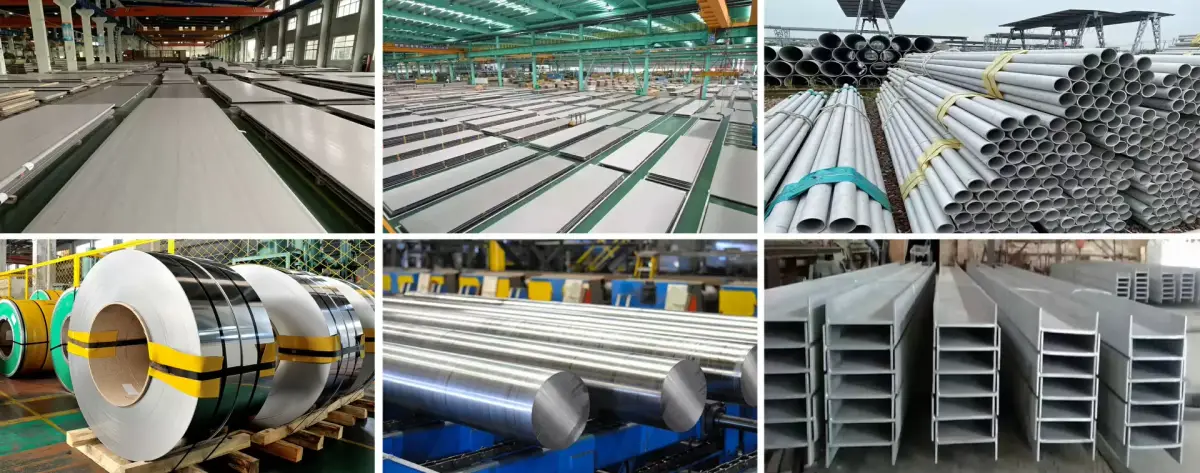

Product Parameters
| Product Name | Stainless Steel Sheet |
| Thickness | 0.25mm – 120mm, etc |
| Width | 10mm – 3,500mm, etc |
| Length: | 2000mm, 2438mm, 3000mm, 5800mm, 6000mm,12000mm, etc |
| Standard | ASME, AISI, ASTM, EN, BS, GB, DIN, JIS, etc. |
| Technology | Hot Rolled/Cold Rolled |
| Surface: | BA, 2B, NO.1, NO.2, NO.4, 4K, HL, Mirror, 8K |
| Application: | It is widely used in high-temperature and electric industry, medical devices, construction, chemistry, food industry, agriculture, and ship components.It also applies to food and beverage packaging, kitchen supplies, trains, aircraft, conveyor belts, vehicles, bolts, nuts, springs, and screen mesh etc. |
| Certification: | ISO, SGS,BV,CE,UL,etc |
| Technique: | Cold Rolled Hot Rolled |
| Edge: | Mill Edge Slit Edge |
| Tolerance | ±1% |
| MOQ | 1 ton |
| Supply Ability | 5000 tons / month |
| Lead Time | 7-15 working days after the receipt of 30% deposit |
| Payment Terms | 30%T/T Advance + 70% Balance |
| Price Terms | FOB, CFR, CIF, EXW |
| Packing | Standard sea-worthy package or as required |
Product Description
Stainless steel sheets are divided into two types: hot-rolled and cold-rolled, including 72938 thin cold plates with a thickness of 0.5.10-885 mm and medium and heavy plates with a thickness of 4.5-100 mm.
It is required to withstand the corrosion of various acids such as oxalic acid, sulfuric acid-ferric sulfate, nitric acid, nitric acid-hydrofluoric acid, sulfuric acid-copper sulfate, phosphoric acid, formic acid, acetic acid, etc. It is widely used in chemical industry, food, medicine, papermaking, petroleum, atomic energy, etc. Industry, as well as various parts and components of construction, kitchenware, tableware, vehicles, and household appliances.
In order to ensure that the mechanical properties such as yield strength, tensile strength, elongation and hardness of all kinds of stainless steel plates meet the requirements, the steel plates must undergo heat treatment such as annealing, solution treatment, and aging treatment before delivery. Special symbols 05.10 88.57.29.38.
The corrosion resistance of stainless steel mainly depends on its alloy composition (chromium, nickel, titanium, silicon, aluminum, manganese, etc.) and internal structure, and the main role is chromium. Chromium has high chemical stability and can form a passivation film on the steel surface to isolate the metal from the outside world, protect the steel plate from being oxidized, and increase the corrosion resistance of the steel plate. After the passivation film is destroyed, the corrosion resistance decreases.
There are two types of hot rolling and cold rolling according to the manufacturing method, and they are divided into 5 types according to the structural characteristics of the steel grade: austenite type, austenite-ferrite type, ferrite type, martensite type, and precipitation hardening type. It is required to withstand the corrosion of various acids such as oxalic acid, sulfuric acid-ferric sulfate, nitric acid, nitric acid-hydrofluoric acid, sulfuric acid-copper sulfate, phosphoric acid, formic acid, acetic acid, etc. It is widely used in chemical industry, food, medicine, papermaking, petroleum, atomic energy, etc. Industry, as well as various parts and components of construction, kitchenware, tableware, vehicles, and household appliances.
The stainless steel plate has a smooth surface, high plasticity, toughness and mechanical strength, and is resistant to corrosion by acids, alkaline gases, solutions and other media. It is an alloy steel that does not rust easily, but not absolutely rust-free.

Factory Tour


